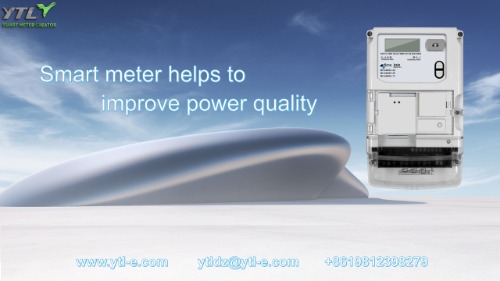Wall mounted energy meter which is conventional power measuring devices that are commonly used for hanging single-phase energy measurement in residential households. On the other hand, suspended three-phase energy meters are mainly used in industries, commercial fields, and large electricity users.
A wall mounted energy meter is a measuring device that requires certain installation skills and precautions. Here are some simple guidelines for installing and using the meter:
Before installing a wall mounted energy meter, choose an installation location that is close to the circuit line or electrical equipment. This makes it easy to monitor and manage the circuit routing and electricity usage. The installation location needs to be relatively empty, less dusty, and not easily contacted by oil, which can ensure a good environment for on-site data viewing. Additionally, the installation position should not be prone to getting wet (such as from rain or water vapor). Excessive moisture increases the risk of terminal corrosion, while from a professional point of view, humidity and dust reduce the creepage distance between the high voltage of the wall mounted energy meter and increase the safety hazard.
The wall mounted energy meter has three mounting spaces for fixed installation, which can be directly fixed with screws or installed and fixed using special pylons. Ensure that the installation position is flat, level, and secure to avoid damage or falling off of the meter caused by improper installation.
Cut off the incoming power supply for the wiring installation of the suspended electric energy meter. Connect the incoming live wire to the live wire of the suspended electric energy meter, and connect the live wire of the incoming line to the live wire of the suspended electric energy meter. Connect the neutral line of the incoming line to the neutral line of the wall mounted energy meter, and connect the neutral line of the incoming line to the neutral line of the wall mounted energy meter. Ensure that the power cord is firmly connected to the wall mounted energy meter to avoid safety hazards caused by loosening (loose connection will excessive contact resistance, heat during use causes meter damage and even fire). To prevent incorrect connection or short circuit, after the connection is completed, use a multimeter to detect whether the circuit is normal.
After ensuring that the installation is normal, install the tail cover of the wall mounted energy meter to isolate any risks associated with human contact with high-voltage terminals. Some smart hanging energy meters are designed with an open cover detection function. If the tail cover is not installed and powered on directly, an alarm event will occur in the meter.
Turn on the incoming power supply and check if the wall mounted energy meter is functioning properly. Check for any working indicators or pulses, etc. Flashing after loading indicates that it is working normally and has been installed correctly.
Through the measurement and recording of wall mounted energy meter, electricity consumption can be effectively monitored and managed, providing a scientific basis for energy management and power conservation.
Knowledge
Home / Information Activity / Blog / Knowledge / Precautions for installing wall mounted energy meter
Precautions for installing wall mounted energy meter

YTL is a professional supplier of energy meter and AMI solution. the Top 100-enterprise with most investment value in Zhejiang. And“Yongtailong”is the famous brand of Zhejiang. With nearly 20 years' experience in energy metering, we devote ourselves to providing competitive projects and creating value for customers.
● Online + Offline. Provide cost-effectiv solutions
● Strict quality control mechanism.High quality assurance
● Five R&D centers,combine with hardware&software design, experiment and testing
● Global service capability, provide customers timely and effective solution
● Good customer feedback. Reliable after-sales service
● Online + Offline. Provide cost-effectiv solutions
● Strict quality control mechanism.High quality assurance
● Five R&D centers,combine with hardware&software design, experiment and testing
● Global service capability, provide customers timely and effective solution
● Good customer feedback. Reliable after-sales service
-
- ABOUT YTL
- About YTL
- Factory
- Honor
- Development
- Privacy
-
- YTL culture
- Culture
- Values
- Advantage
- Three Phase kWh Meter
-
- products
- Single Phase Din Rail Meter
- Three Phase Smart APS Electric Energy Meters
- Three Phase Multi Function Electronic Energy Meter
- Digital Electric Meters
- Electronic Energy Meter
- Electronic Energy Meters
- Three Phase Keypad split type Energy Meter
- Single Phase IC Card Prepayment Energy Meters
- Three Phase Anti-tamper Suspension Energy Meters
-
- Information Activity
- Exhibition News
- Blog
- Staff Activity
- Single Phase Smart Watt Hour Meter
COPYRIGHT © 2020 Zhejiang Yongtailong Electronic Co., Ltd. ALL RIGHTS RESERVED .  China Electronic Energy Meters Manufacturers
China Electronic Energy Meters Manufacturers

 English
English 中文简体
中文简体
.png?imageView2/2/w/500/h/500/format/png/q/100)











